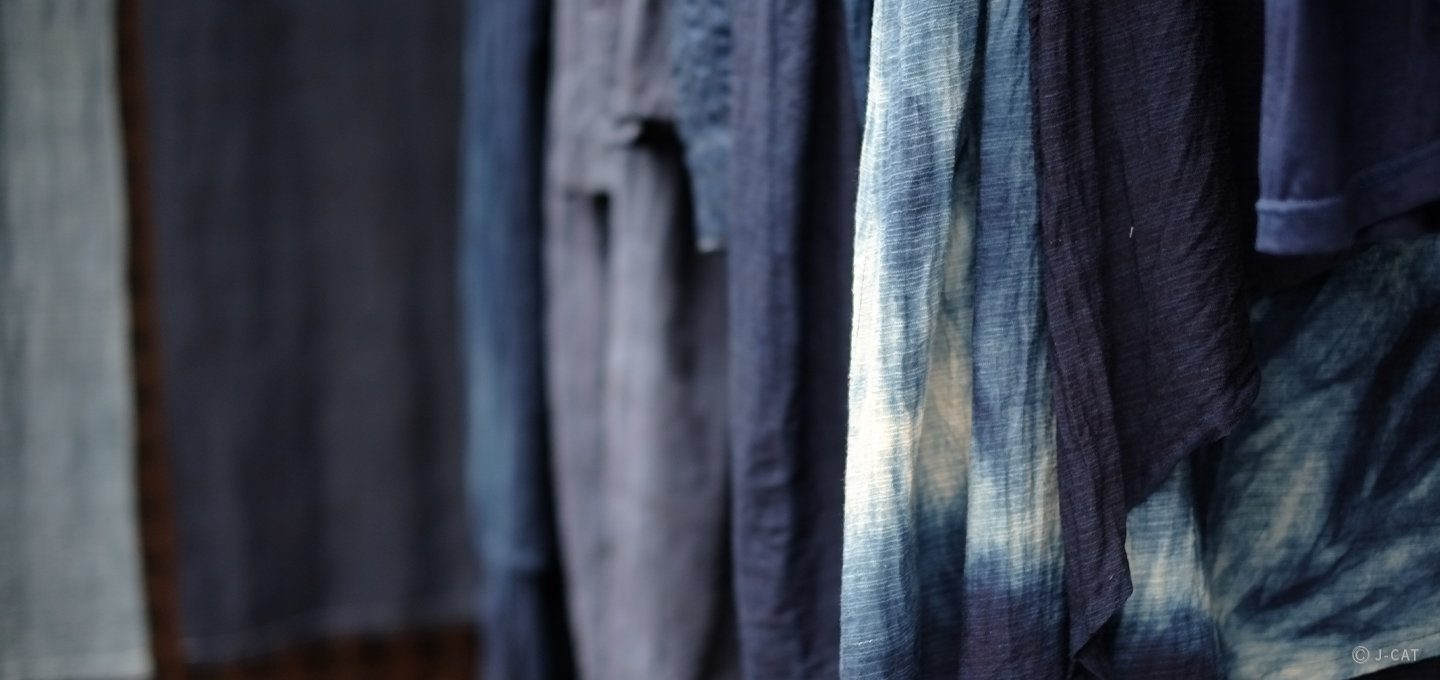
Special Experience
Kyoto
Traditional Indigo Dyeing in Kyoto’s Countryside to Create Your Own “Japan Blue” Stole
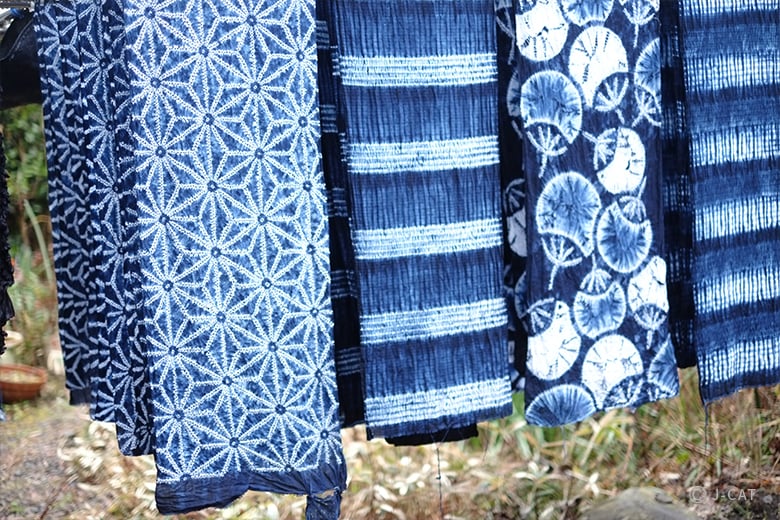
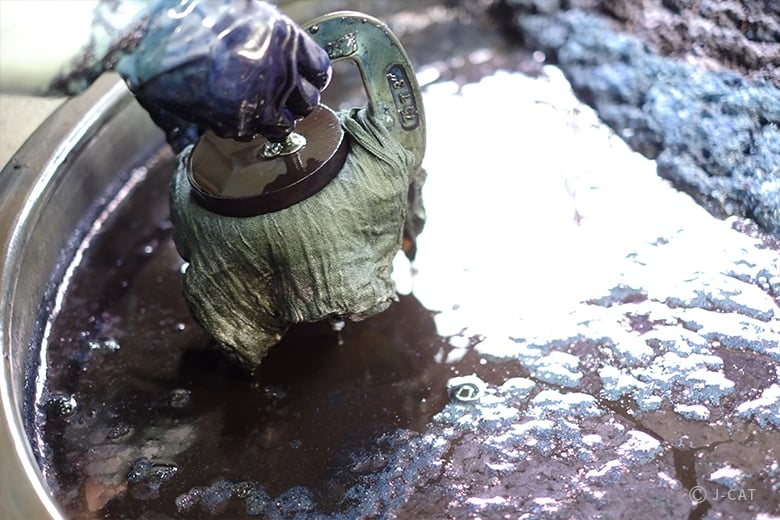
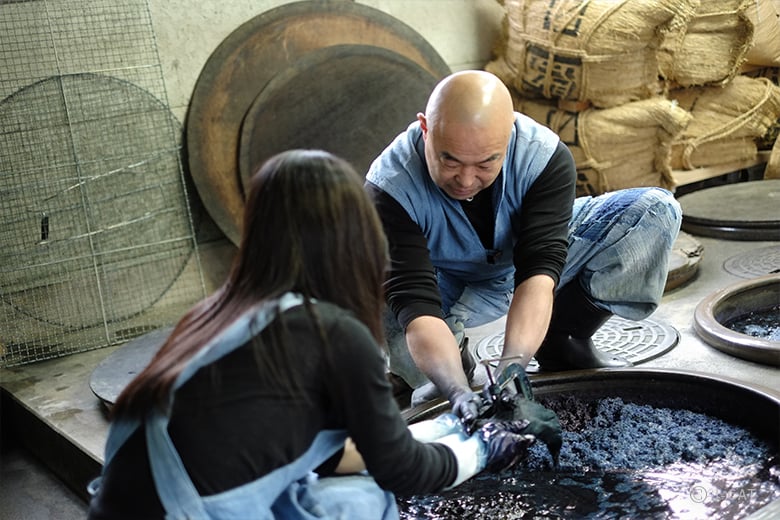
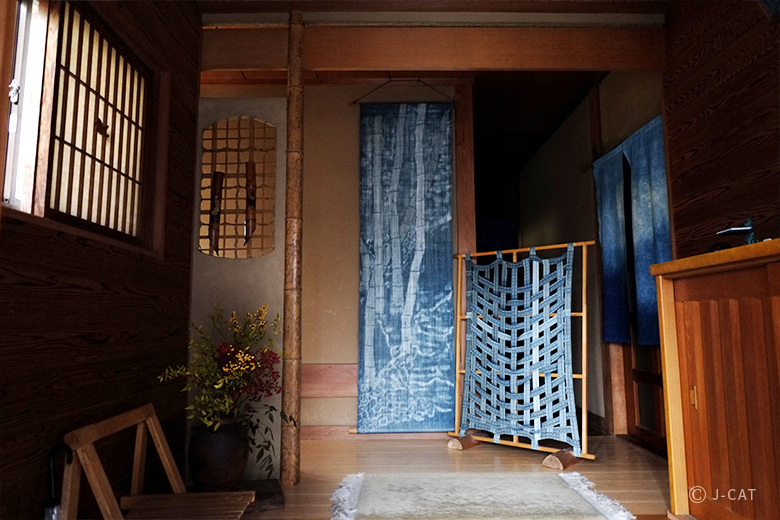
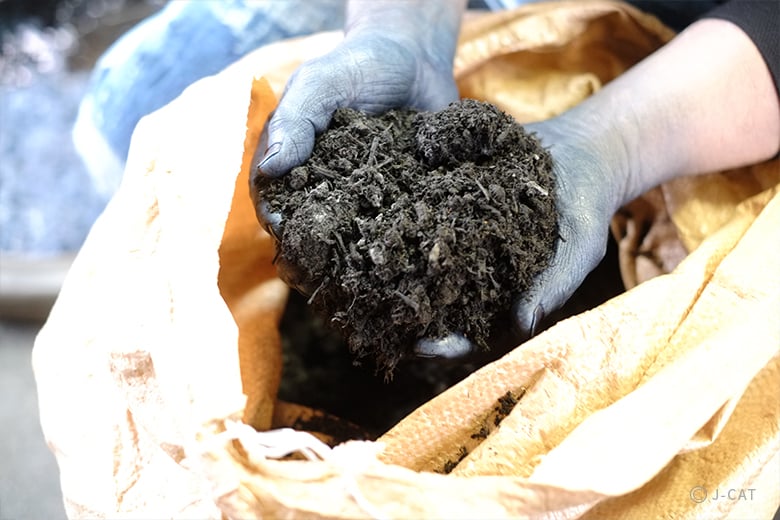
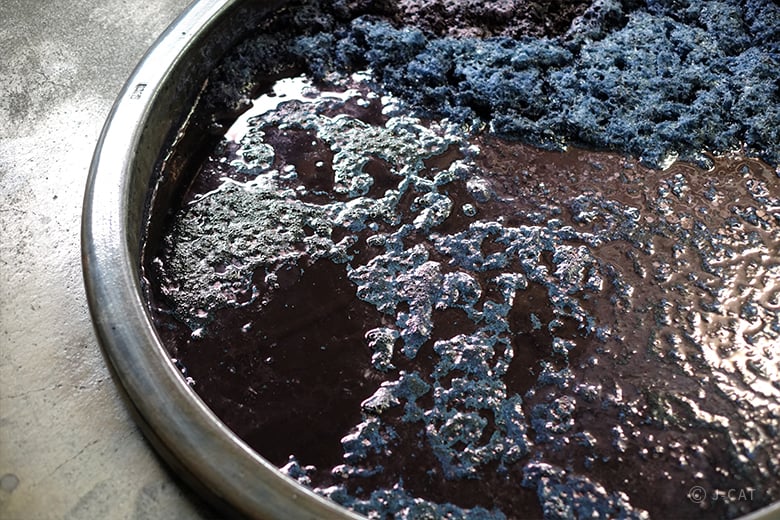
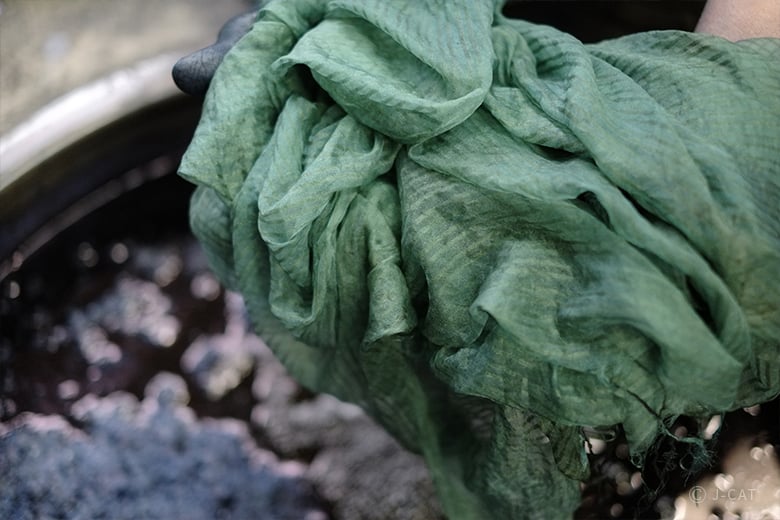
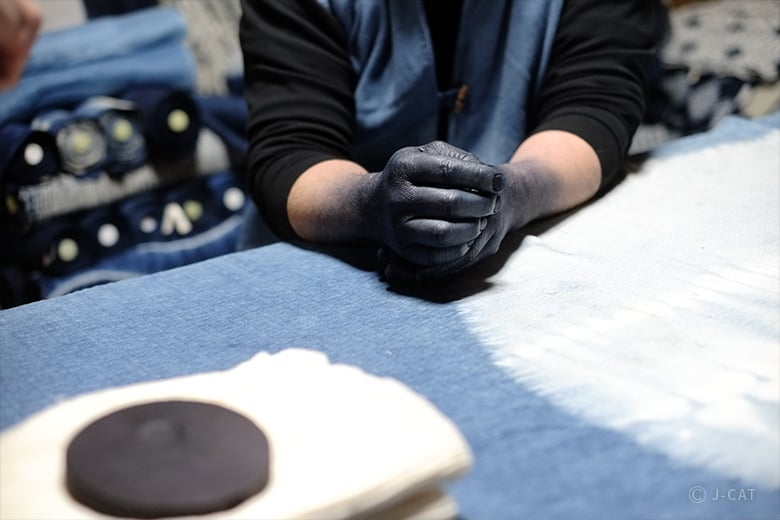
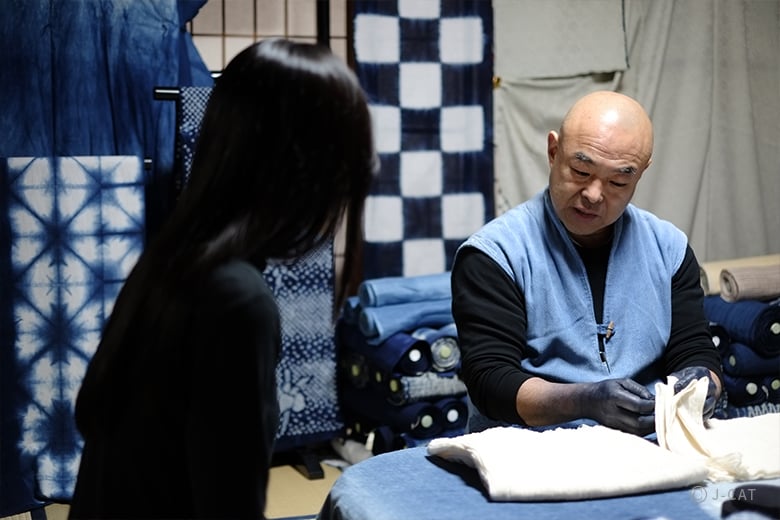
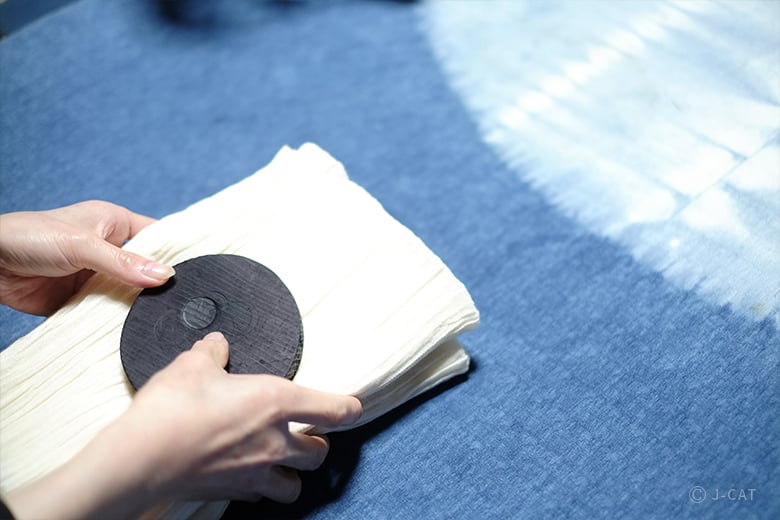
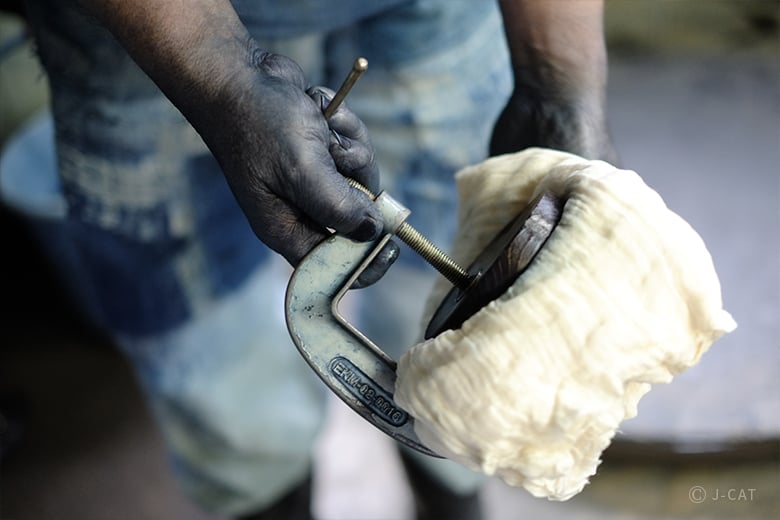
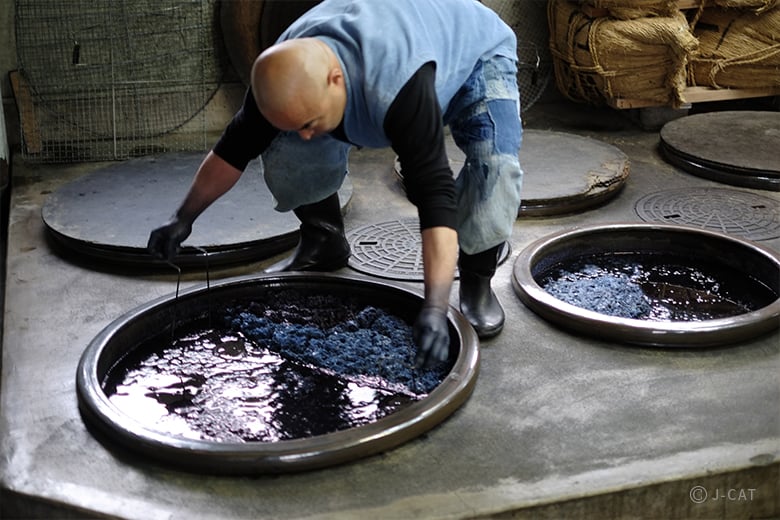
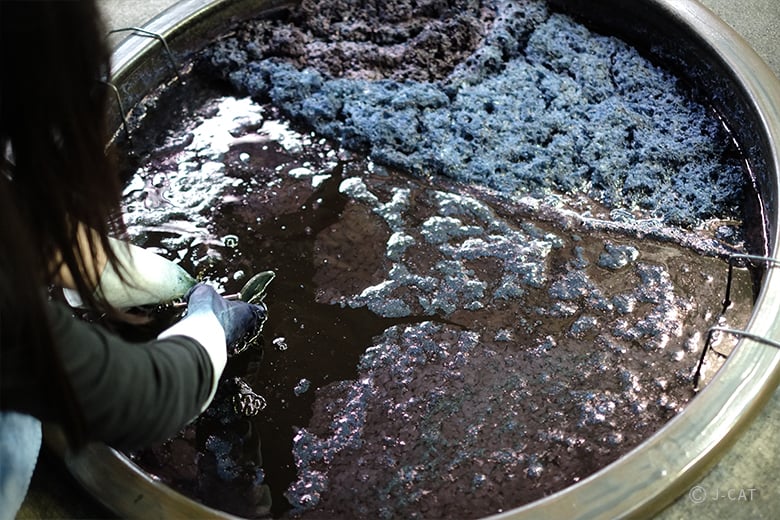
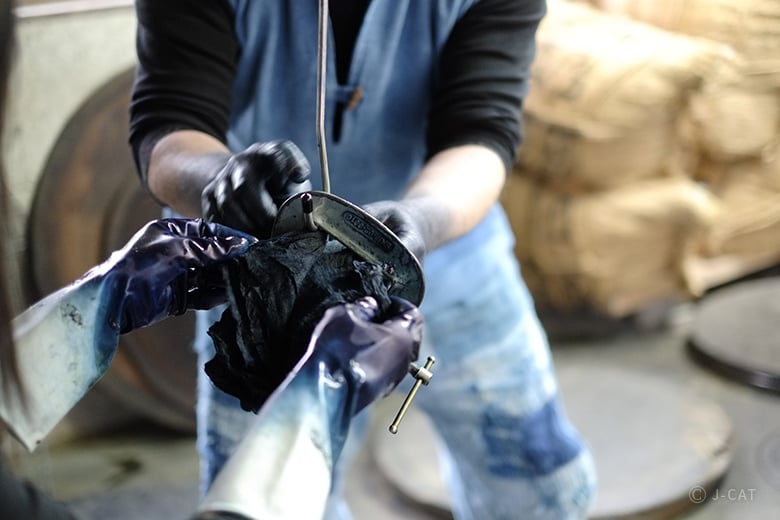
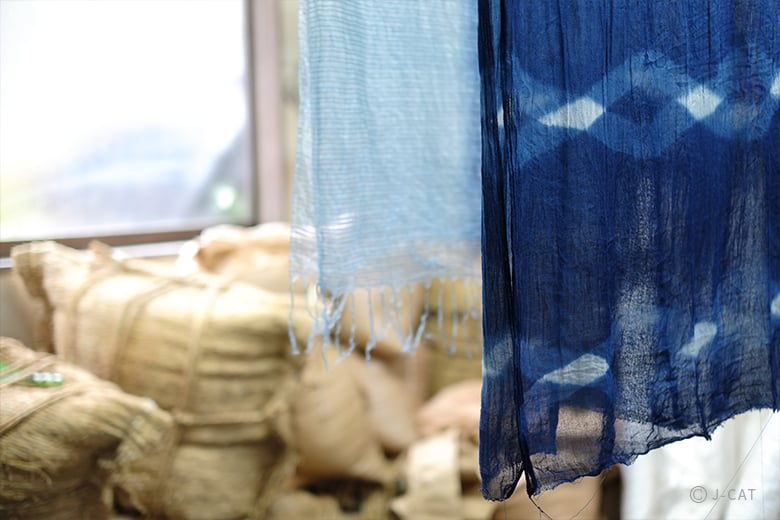
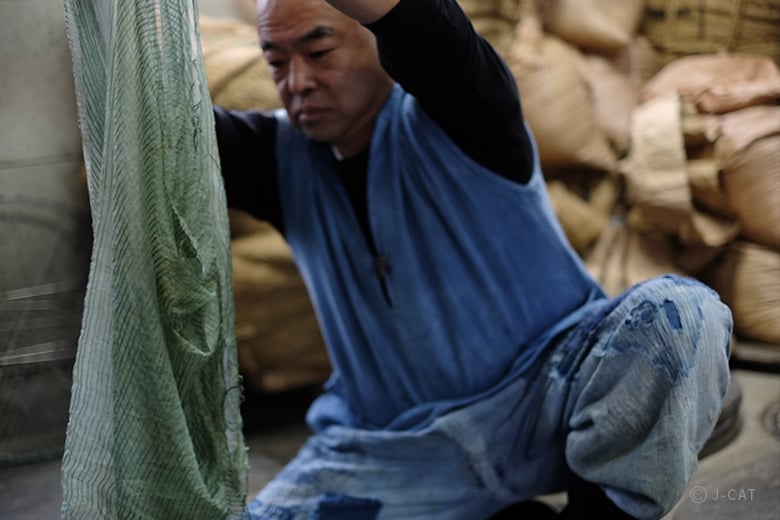
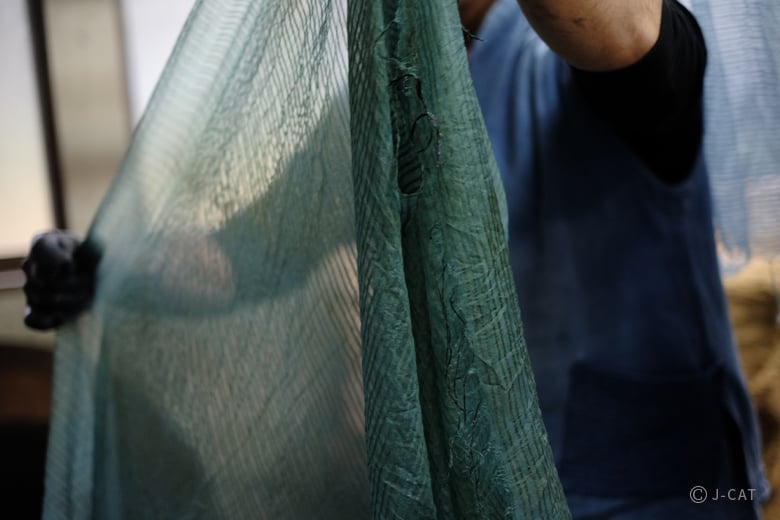
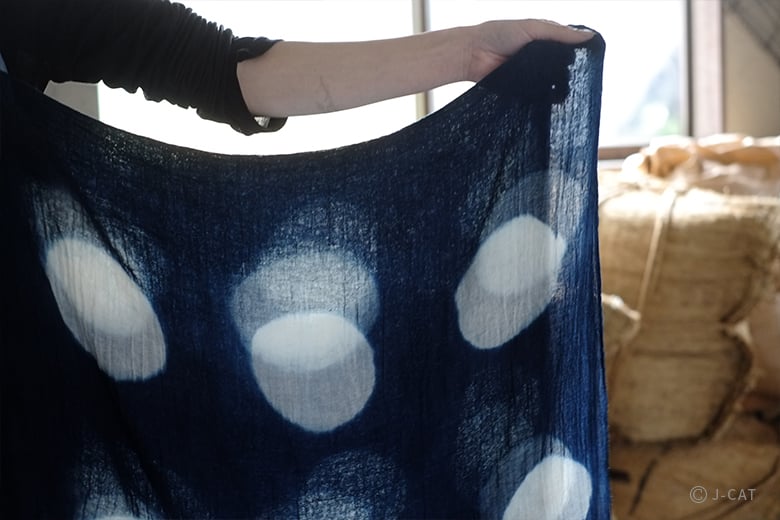
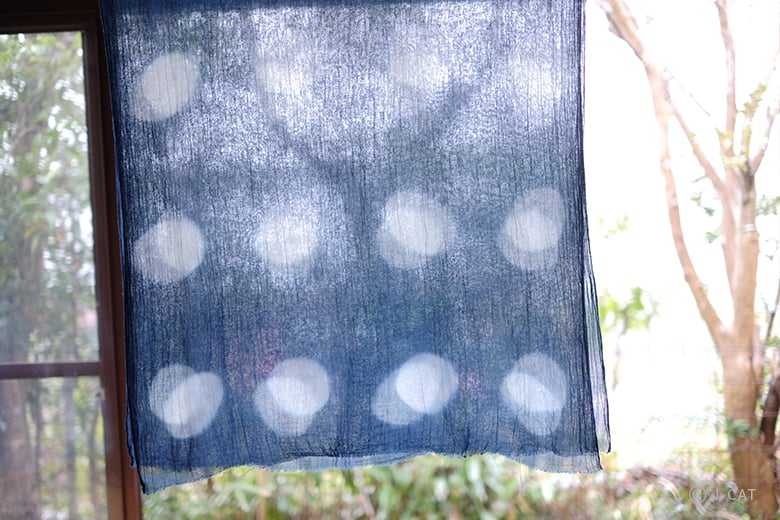
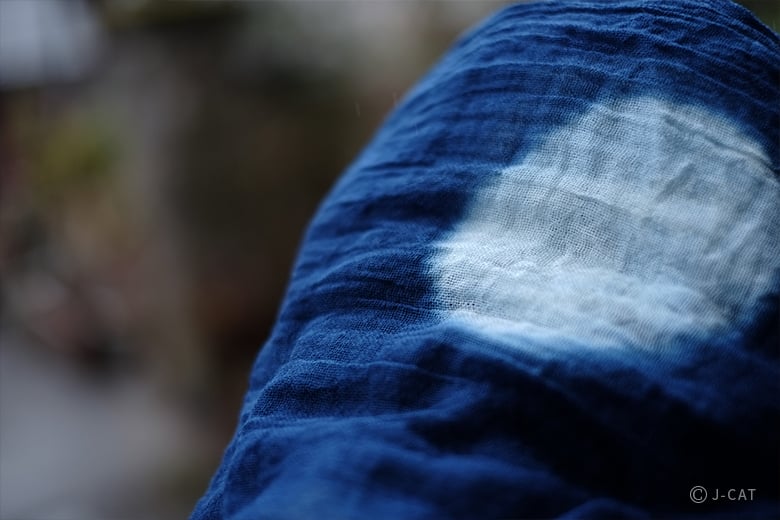
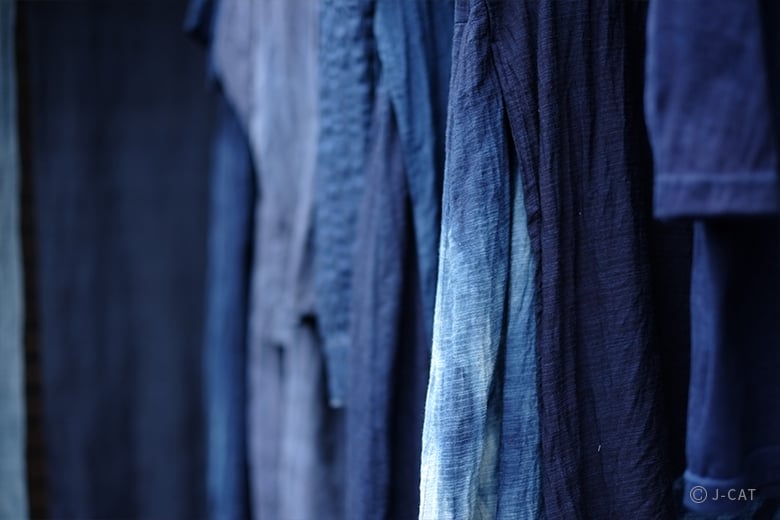
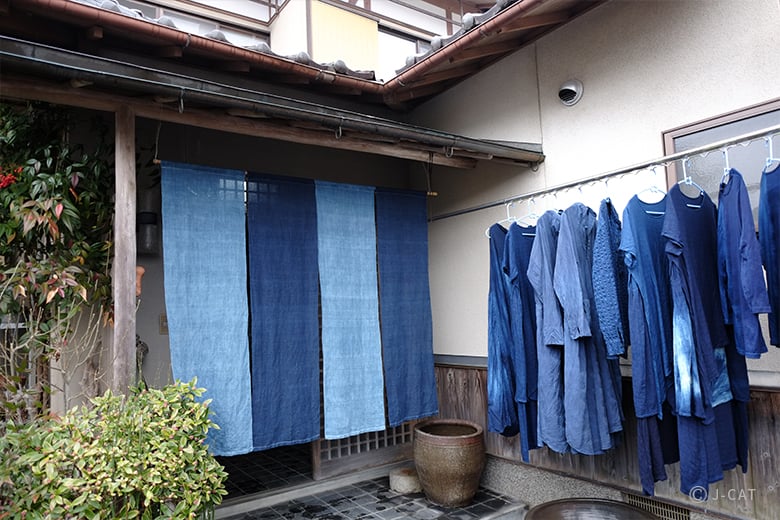






















Overview
Kobo Ainoyakata in Kyoto carries on the traditional method of Japanese indigo dyeing. Here, you can dye a one-of-a-kind stole for yourself in a gorgeous deep indigo hue that has long carried the nickname of “Japan Blue” for its beloved cultural ubiquity in Japan since ancient times. Dyer Toru Shimomura will be your guide into the world of indigo dyeing, teaching not only its techniques and charms but also sharing its story with you. Traditional indigo dyeing is a dynamic living process, so no two pieces are ever exactly alike – making it a perfect celebration of ichigo ichie – one name for Japan’s traditional love for the transient and ephemeral – meaning “a chance that comes only once.”
Key Features
・Get hands-on with traditional indigo dyeing from professional indigo dyer Toru Shimomura
・Learn all about the traditions and culture of indigo dyeing, starting with theory before moving on to application, dyeing a stole for yourself
・As a Wabunka exclusive optional paid add-on, create a wall tapestry instead of a stole
Kyoto
150mins
from ¥44,700 /person
1 - 5 participants
Available in English
Cancel free up to 15 days prior
Details
A Workshop Preserving Authentic “Japan Blue” as Only Traditional Techniques Can
At the end of a 40-minute train and bus ride away from Kyoto Station sits rural Ohara. A stark contrast from the din of the city, Ohara is a quaint and quiet place of fields and clear streams nestled amidst the foothills of Northern Kyoto’s mountains.
Indigo dyeing studio Kobo Ainoyakata sits on a hill in this landscape of traditional scenery. While dyeing processes across Japan have largely changed with the times to incorporate chemical dyes and a mass production approach, this dyer sticks to traditional natural dyes and techniques that have remained the same since ages past.

Hung from the eaves of a dye workshop ensconced in nature, splashes of rich blue arrest the eye
Owner Toru Shimomura carries on ancient techniques. Captivated by the rich traditions he works hard to maintain, his desire is for as many people as possible to witness the striking beauty of the results with their own eyes. And Shimomura’s hand-dyed indigo never fails to bewitch those who do, making him and his work a hot ticket attraction at department stores and exhibitions across Japan. His production orders stay fully booked for years in advance.

Traditional patterns produced from only indigo dye and white cloth (photo is for illustrative purposes only; actual patterns on the day may vary)
Pigment of the People, Tint of the Towns
Shimomura kicks off the experience with a talk on theory and history. While Japan’s traditional approach to indigo dyeing is unique, it is far from the only country to have a history of such traditions. Indigo dyeing is said to have first appeared in Japan around the 7th century, gaining popularity with the upper aristocracy. In the Edo period (1603-1868), it became everyday wear among commoners as well. Indigo dyed cloth, which is said to age with its wearer and suit them more and more over time, was beloved by the masses and came to be a staple in every part of everyday life.

Shimomura offers a thorough lesson on indigo dye and a chance to better understand the traditional culture of Japan
Indigo’s popularity drove powerful demand, which led to a proliferation of indigo dyers and eventually whole towns where its rich variegated hues were the only colors in sight. On an 1874 visit to Japan, British chemist Robert William Atkinson famously noted how what he called “Japan Blue” dominated the landscape. This association between the color and Japan as a nation has become entrenched, and today it is still popular for kimonos and other clothing, as well as handkerchiefs and various other items of daily use.

Light plays beautifully across indigo fabric, accentuating the beauty of its colors
Move next from theory to application, preparing your piece of soft organic cotton for dyeing. The folded cloth is sandwiched between two slabs and then clamped securely in place, allowing some areas to be exposed to the dye but not others. With practice, you will learn how best to fold the cloth to ensure even shades, and other techniques to produce beautiful patterns.

Prep the cloth, setting up patterning by determining which parts will be dyed and which will not
Indigo cloth dyeing techniques can produce a variety of sometimes highly intricate designs including such elements as curves, latticework, and classic Japanese patternings from only the elements of dark blue and white. Exclusive to Wabunka, create a wall tapestry instead of a stole.
Traditional Dyeing Techniques Continue to Produce Blues of Unparalleled Depth and Richness
Once your cloth is prepped, you are ready to move on to the dyeing studio. Look around at the aigame dye-pots full of indigo solution and learn all about the characteristic properties of Japanese indigo versus other varieties in the world. Indigo dye can be produced from a variety of raw materials, including plant varieties such as persicaria tinctoria (typical of Japan and East Asia) or indigofera tinctoria (typical of India), or synthetic chemical compound pigments. Kobo Ainoyakata manufactures its own sukumo dye solution using high-quality Japanese persicaria tinctoria and a production process dating back over six centuries, using dried indigo leaves that have been fermented and matured for about 100 days.

Sukumo from Tokushima Prefecture, Japan’s number one producer of high quality indigo
The sukumo used in Kobo Ainoyakata is a solution produced using a method handed down from the Edo period (1603-1868) called natural lye fermentation. This traditional technique involves dissolving ash into water and harnesses lye and natural fermentation processes to produce a water-soluble indigo dye solution.

Kobo Ainoyakata’s dye solution is produced entirely from natural materials
During fermentation, the temperature of the solution must be kept constant, and progress checked daily by observing the color and bubbles that form on the surface. It takes a practiced eye – not to mention the other five senses – with years of experience like Shimomura to manage, and it is time-consuming and costly. None of this deters Shimomura, who assesses the value confidently from experience: “The gorgeous deep color it yields can’t be achieved with artificial chemical synthesis.”
Enjoy Watching the Color Slowly Take
When the solution is ready it is time to dye the cloth. Fermentation means live culture, so when submerging or kneading the cloth, it is important to move gently and avoid making waves so as not to harm the living microorganisms within. After a 2-3 minute soak, pull up the cloth and wring it out, exposing it to air. This process can be repeated up to 20 times in many cases, but in this experience you will repeat it a few times to learn the entire dyeing process. By actually performing all the steps yourself, you can better bond with your future finished piece.

Move gently when submerging your hands and kneading the cloth, as the dye solution is a delicate live culture
Repeated cycles of washing and drying remove excess pigment from dyed fabrics, over time yielding a clearer and less muddled color. Indigo dye is known for aging with a particular depth and beauty, so you can look forward to its evolution over your continued use of it.

Kobo Ainoyakata’s natural dyeing process is categorized as hon-aizome, used by a vanishingly tiny percentage of the industry
Embodying an Aesthetic of Ephemerality and Transience, the Same Shade Never Appears Twice
This method of indigo dyeing is highly dynamic, producing individualized depth and bleed of color even with the exact same steps and times. And just as no two finished pieces are the same, so each piece is never the same from one use to the next, like the ebb and flow of the seasons. Transience holds particularly philosophical and aesthetic value within Japanese culture, and your indigo dyed cloth will continue to bring you closer and closer to this sensibility long after the experience is over.

Repeated dye cycles impart a rich blue hue
Natural indigo dye also confers deodorizing and insect repellent benefits on the fabric – one reason why the dye has traditionally been so popular for shop entrance curtains of kimono shops, sake breweries, and soba restaurants in Japan since ages past. The stole you dye in this experience can be worn, but it’s equally suited to decorative hanging as interior decor.

Individuality and unique charm is expressed by each varied shade
“I hope for people to experience the beauty of Japanese indigo with all five senses,” Shimomura says of his desire to bring the charm of his beloved craft to a wider audience. Come and find your own shade of “Japan Blue” that is just as unique as you are, and admire its changing colors as it evolves and changes alongside you.
Kobo Ainoyakata

Kobo Ainoyakata
A traditional indigo dye workshop located in verdant Ohara, Kyoto, where a master artisan carries on the storied and increasingly rare tradition of all-natural lye pigment fermentation and chemical-free hand dyeing. Its owner Toru Shimomura works tirelessly across a wide range of publicity events and exhibitions to ensure as many people as possible have the chance to witness real traditional indigo with their own eyes.
Customer's Voice
This was the best experience, it was so cool to watch the process. Fun, informative and beautiful.
K.F. United States
Excellent. The host (the master dyer) has wonderful skill, explains everything clearly, is warm and friendly.
P.V. United States
It was a great and special experience and the guide was also excellent!
T.H. Israel
Location
Kobo Ainoyakata
Sakyo Ward, Kyoto
Request for booking
Select first preferred date (JST)
December 2025
Sun
Mon
Tue
Wed
Thu
Fri
Sat

Instant Booking

Request Booking

17
Full

17
Unavailable
Kyoto
150mins
from ¥44,700 /person
1 - 5 participants
Available in English
Cancel free up to 15 days prior
Things to know
Contact Us
If you have any questions, please contact us using the form below.
We also accept bookings from corporate clients and travel agencies.